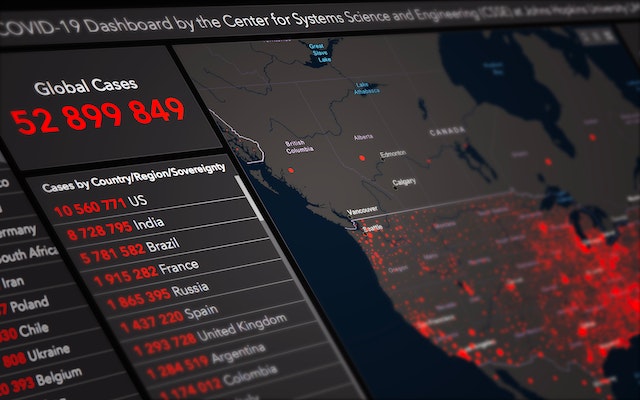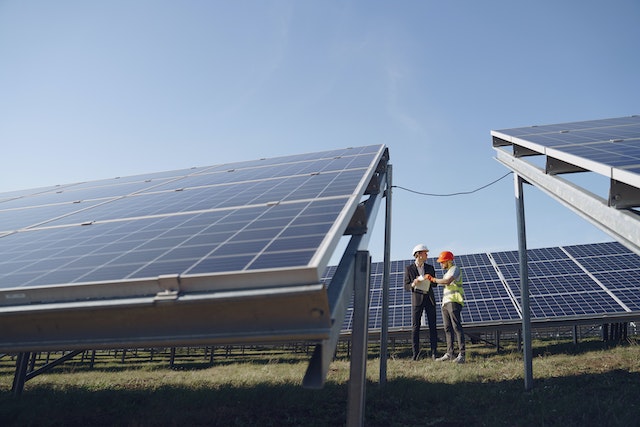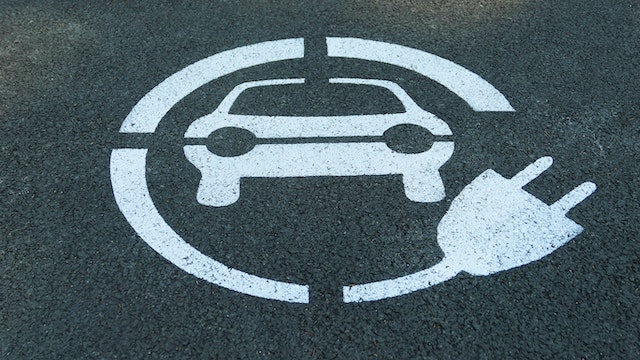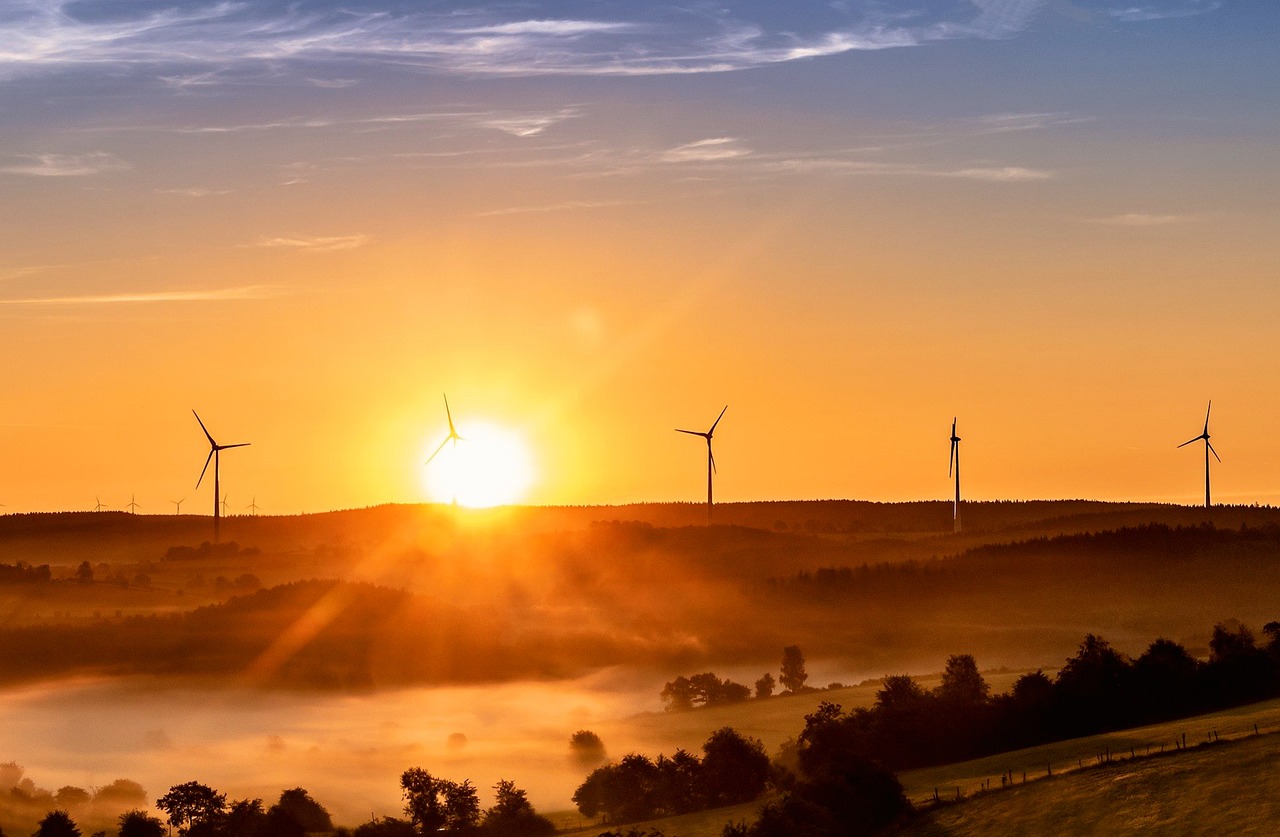Is Renewable Energy Cheaper
The question, “Is Renewable Energy Cheaper?” has been at the forefront of global discussions in recent years. As the world grapples with the effects of climate change and the urgent need to reduce our carbon footprint, the transition from fossil fuels to renewable energy sources has become imperative. This article aims to shed light on the cost dynamics of renewable energy, its comparison with fossil fuels, and the broader implications for the global economy and environment.
The Rising Dominance of Renewable Energy
Solar Power and Wind Energy: Leading the Charge
Solar power and wind power have emerged as frontrunners in the renewable energy sector. Over the past decade, technological advances in solar photovoltaics (solar PV) and wind turbines have led to a significant reduction in the cost of renewable energy. Solar panels, once a luxury, are now becoming commonplace on rooftops. While vast solar farms and wind farms dot landscapes worldwide.
The Real Cost of Fossil Fuels
Significantly while fossil fuels, particularly coal plants and natural gas, have been the mainstay of global power supply for a long time, their true cost extends beyond just monetary value. The environmental damage, greenhouse gases, and contribution to global warming make fossil fuels a costly choice in the long run.
Comparing Costs: Renewable vs. Fossil Fuels
- Initial Investment: Upfront costs for renewable resources like solar arrays and wind energy installations have seen a decline in recent years. While still higher than some fossil fuel plants, the gap is narrowing.
- Operating Cost: The operating cost of renewable energy technologies, especially solar electricity and wind energy, is often lower than coal-fired power plants and gas stations.
- Long-term Contracts: Renewable energy often benefits from long-term contracts, locking in lower costs for consumers and businesses.
- Government Subsidies: Many governments worldwide offer subsidies for green energy sources, further reducing the cost of renewable energy.
The Role of International Agencies
Organizations like the International Renewable Energy Agency and the International Energy Agency have been pivotal in promoting renewable sources. Yet, their research and initiatives have played a crucial role in highlighting the benefits and cost-effectiveness of transitioning to green technology.
Is Renewable Energy Cheaper FAQs:

Is the cost of renewable energy expected to decrease in the coming years?
Yes, the cost of renewable energy is expected to decrease in the coming years. Several factors contribute to this projection:
Technological Advancements: As technology continues to evolve, the efficiency of renewable energy sources, such as solar panels and wind turbines, improves. This leads to higher energy yields at lower costs.
Economies of Scale: As the production of renewable energy technologies scales up, the per-unit cost of production often decreases. This is particularly evident in the solar photovoltaic sector, where mass production has led to significant cost reductions.
Increased Competition: As more players enter the renewable energy market, competition drives innovation and cost reductions.
Research and Development: Continued investment in R&D is leading to breakthroughs that make renewable energy sources more affordable and efficient.
How do offshore wind and onshore wind compare in terms of cost?
Both offshore and onshore wind have their unique cost dynamics:
Onshore Wind: Onshore wind farms generally have lower upfront costs compared to offshore wind farms. The installation, maintenance, and connection to the grid are often simpler and less expensive. As a result, onshore wind has historically been cheaper than offshore wind.
Offshore Wind: While offshore wind projects have higher initial investment requirements due to the complexities of installing turbines at sea, they often benefit from more consistent and stronger wind patterns, leading to higher energy yields.
Over time, as technology has advanced and the industry has gained more experience, the cost of offshore wind has been decreasing. In some regions, offshore wind is becoming competitive with, or even cheaper than, onshore wind, especially when considering the long-term energy output.
Is Renewable Energy Cheaper FAQs:

What role do government subsidies play in the price decline of renewable power generation costs?
Government subsidies play a crucial role in the price decline of renewable power generation costs:
Financial Incentives: Subsidies can significantly reduce the initial investment required for renewable energy projects, making them more financially attractive to developers and investors.
Research and Development: Government grants and subsidies often fund R&D initiatives, leading to technological advancements that drive down costs.
Market Stimulation: By providing financial incentives, governments can stimulate demand for renewable energy, leading to economies of scale and reduced production costs.
Leveling the Playing Field: Subsidies help level the economic playing field, allowing renewable energy to compete more effectively with traditional energy sources, which have historically received their own forms of subsidies and tax breaks.
Are electric vehicles a part of the renewable energy equation?
Absolutely. Electric vehicles (EVs) play a pivotal role in the renewable energy equation:
Reduced Carbon Emissions: EVs, when charged using renewable energy sources, produce zero tailpipe emissions, contributing to a significant reduction in greenhouse gas emissions.
Energy Storage: Advanced EVs can act as mobile energy storage units. When connected to the grid, they can store excess energy produced by renewable sources and feed it back into the grid when needed.
Stimulating Renewable Energy Demand: The rise of EVs increases the demand for electricity. As more regions transition to renewable energy sources, EVs will further drive the demand for clean, green energy.
Is Renewable Energy Cheaper Conclusion (To be continued…)The initial exploration into the cost dynamics of renewable energy paints a promising picture. With the rapid transition to solar power, wind power, and other renewable energy sources, the world is on the brink of a clean energy revolution. The pervasive misconception that renewable energy means sacrifices in terms of cost is being debunked. As we delve deeper, we’ll uncover more insights into the true cost of energy, the role of technological innovation, and the future of our planet.
Is Renewable Energy Cheaper Fact: According to a press release by the International Renewable Energy Agency, the cost of electricity from renewable sources has fallen consistently and is set to become cheaper than fossil fuels by 2020. [Source: International Renewable Energy Agency, 2019]
The Environmental and Economic Implications of Renewable Energy

The Hidden Costs of Fossil Fuels
While the price of electricity from coal plants and natural gas might seem competitive, it’s essential to factor in the indirect costs. These include environmental degradation, health impacts from pollution, and the economic ramifications of climate crises exacerbated by greenhouse gases. When these are accounted for, fossil fuels, especially coal, become the most expensive generator of electricity.
The Decline in Renewable Energy Prices
In the last decade, the cost of renewable energy, particularly solar power and wind energy, has seen a dramatic decrease. Notably this decline is attributed to technological advances, economies of scale, and increased competition in the renewable energy sector. For instance, solar costs have plummeted due to improvements in solar photovoltaics and the mass production of solar panels. Similarly, advancements in wind turbine design and efficiency have reduced wind energy prices.
Renewable Energy and the Global Economy
The shift towards renewable energy sources has significant implications for the global economy. As countries invest in green technology and infrastructure, new job opportunities emerge, reducing unemployment rates. Moreover, as the cost of renewable energy continues to fall, electricity prices stabilize, leading to economic growth and stability.
The Role of Electric Vehicles (EVs)
Electric vehicles are an integral part of the renewable energy narrative. Thus, as the transportation sector accounts for a significant portion of global emissions, transitioning to EVs can drastically reduce our carbon footprint. With the rise of cheap renewables, EVs can be charged using green energy sources, further amplifying their environmental benefits.
Hydroelectric Power: An Underestimated Giant
While solar and wind power often dominate discussions around renewable energy, hydroelectric power remains a significant player. It’s a reliable and consistent source of energy, with countries like the United States and Abu Dhabi investing heavily in hydroelectric projects. The cost of energy from hydroelectric plants is competitive, and with technological innovation, it’s set to become even more affordable.
Addressing the Climate Crisis
The transition to renewable energy is not just an economic decision; it’s a moral imperative. With global temperatures on the rise, addressing the climate crisis is of paramount importance. Investing in renewable energy systems is a step towards a sustainable future, mitigating the adverse effects of global warming.
The Myth of High Costs
A pervasive misconception is that renewable energy sources, especially solar power and wind power, come with high costs. While upfront costs for solar projects or wind farms might be significant, the long-term benefits, both environmental and economic, outweigh these initial investments. Moreover, with government subsidies and long-term contracts, the cost of electricity from renewable sources is often on par or even lower than fossil fuel plants.
The Future of Renewable Energy
As we look ahead, the future of renewable energy seems bright. With the backing of international agencies like the Intergovernmental Panel on Climate Change and the support of computer models predicting a decline in renewable energy costs, the next few years are set to witness a green revolution. The question is no longer, “Is Renewable Energy Cheaper?” but rather, “How can we accelerate the clean energy transition?”
Is Renewable Energy Cheaper Conclusion (To be continued…)
The journey into understanding the cost dynamics of renewable energy has revealed a landscape of hope and promise. As the world unites in its fight against climate change, renewable energy stands as a beacon of progress, signaling a brighter, greener future.
The Global Shift Towards Renewable Energy

Transitioning from Fossil Fuels
The past models of energy consumption, heavily reliant on coal-fired power plants and other fossil fuel plants, are becoming obsolete. The rapid transition to renewable resources is not just an environmental need but also an economic one. With fossil fuel costs fluctuating due to geopolitical tensions and natural gas prices seeing sporadic spikes, the stability offered by renewable energy prices is a welcome change for many nations.
Solar Power: The Shining Beacon
Solar power, particularly solar electricity generated through solar arrays and solar projects, has seen a surge in adoption in recent years. The declining cost of solar panels and the increasing efficiency of solar photovoltaics have made solar energy a viable option for many countries, even those without abundant sunlight. The International Energy Agency predicts that solar electricity will play a pivotal role in meeting the world’s energy demand in the coming years.
Wind Energy: Harnessing Nature’s Power
Both onshore wind and offshore wind have their unique advantages. While onshore wind farms are easier to set up and have lower upfront costs, offshore wind projects, especially in regions with consistent wind patterns, can generate electricity more reliably. The price of electricity from wind energy, backed by technological innovation and economies of scale, is set to rival even the cheapest fossil fuels in the near future.
The Role of Government and Policy
Government subsidies and policies play a crucial role in promoting renewable energy. By offering incentives for solar projects, wind farms, and other green technology initiatives, governments can expedite the shift from fossil fuels. Moreover, long-term contracts and power purchase agreements ensure that renewable energy producers have financial stability, further driving down the cost of electricity from renewable sources.
Addressing the Misconceptions
One of the pervasive misconceptions surrounding renewable energy is the belief in its inconsistency. While it’s true that the sun doesn’t always shine and the wind doesn’t always blow, advancements in energy storage solutions and grid management have made renewable energy more reliable than ever. Battery storage, in conjunction with solar farms and wind turbines, ensures a consistent power supply, debunking the myth of renewable energy’s unreliability.
The Environmental Imperative
Beyond the economic arguments, the environmental case for renewable energy is undeniable. With the climate crisis looming large, reducing our carbon footprint is not just desirable but essential. Renewable energy systems, from solar panels to wind turbines, offer a path to a sustainable future, free from the shackles of greenhouse gases and environmental damage.
The Human Aspect: Empathy and Understanding
Transitioning to renewable energy is not just about numbers and economics; it’s about people. Communities that have relied on coal plants and gas stations for their livelihoods face uncertainty in this green transition. It’s essential to approach the topic with empathy, understanding the human emotions and apprehensions involved. Reskilling programs and community outreach can ensure that no one is left behind in the clean energy transition.
Is Renewable Energy Cheaper Conclusion (To be continued…)
As we delve deeper into the world of renewable energy, the narrative becomes clear. The question, “Is Renewable Energy Cheaper?” is being answered with a resounding “Yes!” But beyond the economics, the shift to green energy sources represents hope—a hope for a cleaner, brighter, and more sustainable future for all.
The Broader Implications of a Renewable Future

Economic Revitalization through Green Technology
The global economy stands at the cusp of a transformative phase. As nations pivot towards renewable energy sources, there’s a ripple effect on job creation, technological innovation, and infrastructural development. Solar projects, wind farms, and hydroelectric power plants not only generate electricity but also stimulate local economies. From the manufacturing of solar panels and wind turbines to their installation and maintenance, new job avenues are emerging, promising economic revitalization in regions previously dependent on fossil fuels.
The Role of Electric Vehicles in a Green Economy
The surge in electric vehicles (EVs) is closely intertwined with the rise of renewable energy. As the price of electricity from renewable sources continues to decline, EVs become an increasingly economical choice.
In fact, Charging stations powered by solar arrays or wind energy ensure that the transportation sector significantly reduces its carbon footprint. Furthermore, the integration of EVs into the grid can act as energy storage, further stabilizing electricity prices and supply.
The Global Response to Climate Change
The international community’s response to the climate crisis has been amplified by the feasibility of renewable energy. Countries are now more equipped than ever to meet their commitments under global agreements like the Paris Accord. With renewable energy technologies becoming mainstream, nations can ambitiously target reductions in greenhouse gas emissions, addressing global warming more proactively.
Innovations in Energy Storage
One of the challenges with renewable sources like solar power and wind energy has been their intermittent nature. However, recent years have witnessed groundbreaking innovations in energy storage solutions. Advanced battery technologies, pumped hydro storage, and thermal storage have ensured that energy generated from renewable sources can be stored efficiently and dispatched when needed, ensuring grid reliability.
The Societal Shift: Awareness and Acceptance
The past decade has seen a societal shift in the perception of renewable energy. As awareness about the climate crisis grows, there’s a collective realization of the need for sustainable solutions. Renewable energy, once seen as an alternative, is now viewed as the primary path forward. This change in perception is crucial in driving policy decisions, consumer choices, and corporate strategies.
The Final Frontier: Integrating Renewables into the Grid
The integration of a high percentage of renewable energy into the power grid presents technical challenges. However, with advancements in grid management, smart grids, and demand response systems, these challenges are being addressed. The future power grid will be a blend of traditional and renewable sources, managed efficiently through advanced technologies and real-time data.
The Vision for the Future
As we envision the future, it’s clear that renewable energy will play a pivotal role. Importantly Cities powered by clean energy, transportation systems devoid of emissions, and industries operating with minimal environmental impact are all within reach. Plus, the transition might be challenging, but the rewards, both for the planet and its inhabitants, are immense.
Is Renewable Energy Cheaper Conclusion
Finally, the exploration into the realm of renewable energy has been enlightening. The evidence is clear: not only is renewable energy cheaper, but it also offers a path to a sustainable, prosperous, and environmentally-responsible future. Hence the question, “Is Renewable Energy Cheaper?” has evolved into a broader inquiry about our collective responsibility towards the planet and future generations. As we stand at this pivotal moment in history, the choices we make will shape the legacy we leave behind.
Recent Posts
Wind Energy and Its Economic Benefits for Local Communities Firstly wind energy has emerged as a powerful driver of economic development, particularly in local communities. It provides a...
Potential Energy in a Spring: Understanding the Fundamentals
Potential Energy in a Spring Firstly, understanding the potential energy in a spring is fundamental to grasping how energy is stored and transferred in various physical systems. Springs, as...


